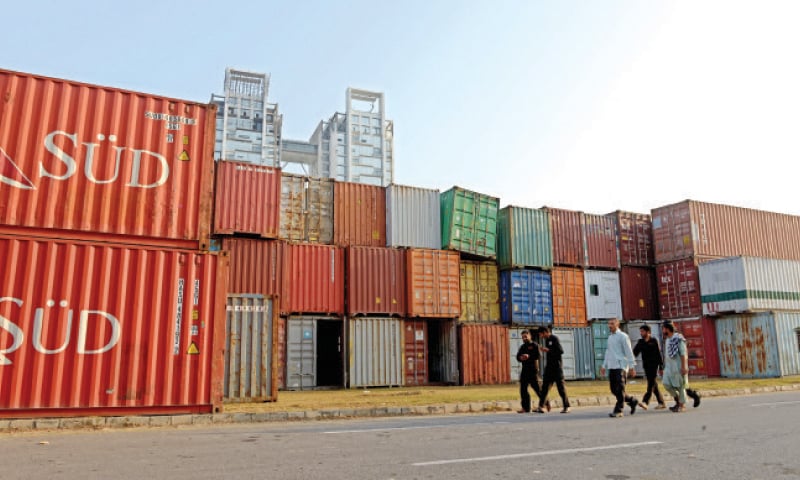PTBP Web Desk
The Ministry of Commerce Pakistan has reportedly finalized the draft of the five-year Textile and Apparel Policy (2025-30), aiming to set a roadmap for boosting textile exports, promoting investment, and enhancing competitiveness in the global market. According to sources, the draft policy is now ready for submission to the Economic Coordination Committee (ECC) of the Cabinet, though officials have decided to hold an inter-ministerial consultation to incorporate feedback from other concerned ministries before final approval.
The proposed Textile and Apparel Policy Pakistan 2025-30 is designed to align with the export targets of the National Export Development Board (NEDB) under the Uraan Pakistan initiative, which promotes “Made in Pakistan” products globally. The policy sets ambitious export targets, envisioning a significant rise in textile and apparel exports over the next five fiscal years.
The draft policy specifies the following export targets:
- FY 2025-26: USD 19.370 billion
- FY 2026-27: USD 21.420 billion
- FY 2027-28: USD 23.740 billion
- FY 2028-29: USD 26.710 billion
- FY 2029-30: USD 29.381 billion
Despite these ambitious goals, stakeholders in the textile sector have expressed concerns that the draft policy may not achieve its objectives unless industry recommendations are given sufficient weight in the final document. “Since the country is under the IMF programme, understandings with the industry may not be fully honored, which could limit the policy’s effectiveness,” said one industry representative.
The Commerce Ministry has outlined several strategic objectives for the policy, covering textiles, apparel, made-ups, home textiles, intermediates, and raw materials:
- Boost Exports and Value Addition: Increase overall textile and apparel exports to USD 29.381 billion by FY 2029-30 while enhancing exports of value-added products and maximizing the use of locally produced raw materials and intermediates.
- Attract Investment: Promote export-led investment, focusing on high-value, high-tech, and environmentally friendly projects to enhance productivity and economies of scale.
- Sustainable Manufacturing Practices: Encourage resource efficiency, industrial decarbonization, circular economy initiatives, and corporate social responsibility.
- Human Resource Development: Improve workforce quality through training, capacity building, and skill enhancement programs.
The draft policy identifies several key interventions to support the textile and apparel sector:
- Export Finance and Credit Facilities:
- The State Bank of Pakistan (SBP) and EXIM Bank, in coordination with the Ministry of Commerce and the Ministry of Industries & Production, will redesign the Export Finance Scheme (EFS) for better targeting and utilization.
- Credit limits will prioritize value-added sectors and MSMEs, with reduced mark-ups.
- Targeted financing schemes will support investments in technical textiles, apparel, smart materials, ancillary industries, and green technological transformations.
- Credit Risk Insurance:
- EXIM Bank, with SBP, will scale up credit risk insurance for exporters to cover commercial and political risks, including buyer insolvency, payment defaults, and trade restrictions.
- Renewable Energy Financing:
- The EXIM Bank and SBP will relaunch financing schemes for renewable energy projects, prioritizing MSMEs to reduce carbon footprints and minimize fossil fuel imports.
- E-Commerce Support:
- Incentives will be provided for establishing warehouses abroad for exporters entering e-commerce markets.
- Extended Export Realization Periods:
- SBP plans to increase export realization periods from 120 to 180 days and revise penalties on delayed payments. The MSME definition will also be linked to the dollar-rupee parity.
Reliable and affordable energy is critical for the export-oriented textile industry. The Power Division will implement measures to ensure:
- Electricity supply to exporters at regionally competitive tariffs, excluding cross-subsidies.
- Diversification of energy sources, combining renewable and conventional resources.
- Modernization of infrastructure to reduce transmission and distribution losses.
- Uninterrupted power supply to the export sectors.
- Operationalization of the Competitive Trading Bilateral Contracts Market (CTBCM).
- Incremental electricity consumption packages and review of surplus unit exports under the Solar Net-Metering Policy.
Industry stakeholders have cautioned that without proper alignment between government policies and industry realities, the Textile and Apparel Policy may remain largely a document rather than an actionable framework. Ensuring practical measures, particularly around finance, energy, and exports, is essential to achieve the ambitious targets.
The finalized Textile and Apparel Policy Pakistan 2025-30 aims to enhance global competitiveness, attract foreign investment, and achieve sustainable growth in the textile and apparel sector. Once approved by the Economic Coordination Committee (ECC), the policy will guide Pakistan’s textile exports toward USD 29.381 billion by FY 2029-30, supporting the broader “Made in Pakistan” export promotion initiative.




